Have you ever wonder why do dogs have wet noses? It’s a question that sparks curiosity in every dog lover. A dog’s wet nose is not just an adorable feature; it serves fascinating purposes that contribute to their overall health and behavior. In this blog post, we will explore the intriguing reasons behind this common canine characteristic. Did you know that a wet nose can help your furry friend to smell better? Scientific studies shows that moisture on a dog’s nose enhances their ability to detect scents, making them exceptional hunters and companions. But that’s not all! The temperature of a dog’s nose can also indicate their health status—so it’s important to pay attention! By understanding the science behind wet noses and their role in your dog’s well-being, you can deepen your connection with your pet. Are you ready to uncover the secrets of your four-legged friend? Join us as we dive into the compelling world of dog noses, and discover why having a wet nose is more than just cute—it’s essential! Don’t miss out on these amazing insights that every dog owner should know!
The Science Behind Wet Noses: Why Dogs Have Moist Noses and What It Means for Their Health

Dogs are often known for their wet noses, and there’s actually a lot of science behind this fascinating feature. Many people, including dog owners, might wonder, “Why do dogs have wet noses?” This question goes beyond just simple curiosity; it relates to their health, behavior, and even their ability to interact with the world around them. So, let’s dive deeper into this topic and discover the reasons why those little noses are moist.
The Biology of Dog Noses
Dogs’ noses are not just cute; they serve several important functions. The moisture on a dog’s nose helps to enhance their sense of smell. In fact, a dog’s olfactory receptors are estimated to be anywhere from 10,000 to 100,000 times more sensitive than humans’. This heightened sense of smell is crucial for their ability to track scents, find food, and communicate with other animals.
Here are some key points about the biology of dog noses:
- Nasal Glands: Dogs have specialized glands in their noses that produce mucus. This mucus helps to capture scent particles, making it easier for dogs to detect various smells.
- Temperature Regulation: Dogs also use their noses to help regulate their body temperature. When they pant, moisture evaporates from their noses, which can help cool them down.
- Hydration: A moist nose often indicates that the dog is well-hydrated. Conversely, a dry nose can sometimes signal dehydration or health issues.
Understanding the Moisture
Why do dogs have wet noses? The moisture you see is a combination of saliva and mucus, which serves several purposes. When a dog licks its nose, they are essentially tasting the scents around them. This process is known as the Flehmen response, which allows them to better identify a scent by bringing it closer to their vomeronasal organ, located on the roof of their mouth.
Below are some fascinating reasons why dog noses are wet:
- Enhanced Smell: The moisture traps scent particles, enhancing the dog’s sense of smell.
- Cooling Mechanism: Evaporation of moisture can help cool down the dog.
- Health Indicator: A wet nose is often a sign of a healthy dog, while a dry nose can indicate issues.
The Historical Perspective
The relationship between humans and dogs goes back thousands of years. Throughout history, dogs have been bred for various traits, including their sense of smell. For instance, hunting dogs were specifically selected for their olfactory abilities, which were heavily reliant on their moist noses.
In many cultures, dogs have been seen as companions and helpers, showcasing their noses in roles such as search-and-rescue or therapy dogs. The wet nose has become a symbol of health and vitality in canine companions, influencing how people perceive their well-being.
Health Implications of Nose Moisture
While a wet nose is generally a sign of a healthy dog, it’s important to consider the context. A change in the moisture level of a dog’s nose could indicate health problems. Here’s a quick overview of what different nose conditions might mean:
| Condition | Description |
|---|---|
| Wet Nose | Usually indicates good health and hydration. |
| Dry Nose | May suggest dehydration, fever, or other health issues. |
| Cracked Nose | Could indicate dehydration or a skin condition. |
| Excessively Wet Nose | Might signal a respiratory infection or other illness. |
Behavioral Aspects
Dogs use their noses not just for smelling but also as a way to communicate. A dog may sniff another dog’s nose or rear end to gather information about that dog, such as their health, diet, and mood. This social behavior is instinctual and plays a crucial role in canine interactions.
Practical Tips for Dog Owners
If you’re a dog owner, it’s essential to keep an eye on your dog’s nose condition. Here are some practical tips:
- Hydration: Ensure your dog has access to fresh water at all times to maintain moisture in their nose.
- Regular Vet Check-ups: Regular visits to the vet can help catch any potential health issues early.
- Watch for Changes: If you notice a sudden change in your dog’s nose moisture, consult your veterinarian.
Understanding the science behind why dogs have wet noses gives us insight into their health and behavior. It’s not just an adorable feature; it’s a vital part of who they are. So, the next time you see your furry friend with a moist nose, remember the fascinating reasons that contribute to this unique characteristic. Dogs are truly remarkable creatures, and their wet noses are just one of the many reasons we love them.
5 Fascinating Facts About Dogs’ Wet Noses That Will Blow Your Mind

When you think about dogs, their wagging tails and playful barks come to mind. But one thing that often gets overlooked is their wet noses. Most of us just accept it as a normal thing, but have you ever wondered why do dogs have wet noses? Well, it turns out there’s actually some pretty fascinating reasons behind this curious canine feature. Here’re five mind-blowing facts that might just change the way you think about your furry friend’s snout.
1. The Science Behind Wet Noses
Dog noses are wet for several reasons, and it’s not just because they like to stick their faces in water bowls. A dog’s nose is covered in a thin layer of mucus that helps them with smell. This mucus captures scent particles from the air, which makes it easier for dogs to process and identify various smells. In fact, dogs have up to 300 million smell receptors in their noses, compared to a human’s mere 5 million!
- Wet noses help dogs smell better.
- The moisture captures scent particles.
- More receptors means more accurate smells.
2. Temperature Regulation
Did you know that a dog’s nose also plays a role in regulating its body temperature? Just like us, dogs can get too hot, and they need to cool down. When a dog is panting, the moisture on their nose helps to cool them off. It’s kind of like how we sweat. A wet nose helps lower their body temperature, especially after a good romp in the park or a long walk.
- Dogs don’t sweat like humans do.
- Wet noses help cool them down.
- It’s an essential part of their self-regulation.
3. Communication Tool
Dogs are social animals, and their noses are a crucial part of how they communicate with each other and with humans. When dogs sniff each other’s noses, they are gathering important information about the other dog. This can include data about their health, diet, and even their emotional state. A wet nose is often perceived as a friendly gesture, inviting interaction and connection.
- Sniffing is a form of dog communication.
- Wet noses indicate a friendly approach.
- They can read a lot from each other’s scents.
4. Health Indicators
The state of a dog’s nose can often be an indicator of their health. A healthy dog usually has a moist and cool nose. If a dog’s nose becomes dry or cracked, it may be a sign of dehydration or illness. However, not all dry noses are a cause for concern. Just like us, dogs can have variations in their nose moisture levels based on various factors including weather, activity level, and time of day.
- A healthy nose is typically moist and cool.
- Dryness can indicate health issues.
- Changes in moisture can depend on several factors.
5. Evolutionary Advantage
The evolution of dogs has given them a wet nose for good reason. Dogs are descendants of wolves, who relied heavily on their sense of smell for hunting and survival. A wet nose enhances their olfactory capabilities, which was crucial for finding food and avoiding danger. Even today, these traits remain in domestic dogs, making them some of the best sniffers around.
- Dogs evolved from wolves, who needed great smells to hunt.
- Wet noses improve their olfactory senses.
- This evolutionary trait is still beneficial today.
Quick Facts About Dogs’ Wet Noses
- Dogs have around 300 million scent receptors.
- Their noses are around 40% more sensitive than humans.
- Wet noses can help identify health issues.
- A dog’s sense of smell can detect certain diseases, like cancer.
- Dogs can even differentiate between emotional states through scents.
Understanding why do dogs have wet noses can deepen your appreciation for these incredible creatures. It’s not just a quirky trait; it’s a vital part of their biology and behavior. Whether they are sniffing out a new friend or cooling off after a long day, dog noses are fascinating features that serve multiple purposes. So next time you give your pup a scratch behind the ears, take a moment to marvel at that wet nose! It’s a small detail, but it holds a world of wonder.
The Role of a Dog’s Wet Nose in Their Sense of Smell: Uncovering the Incredible Biology
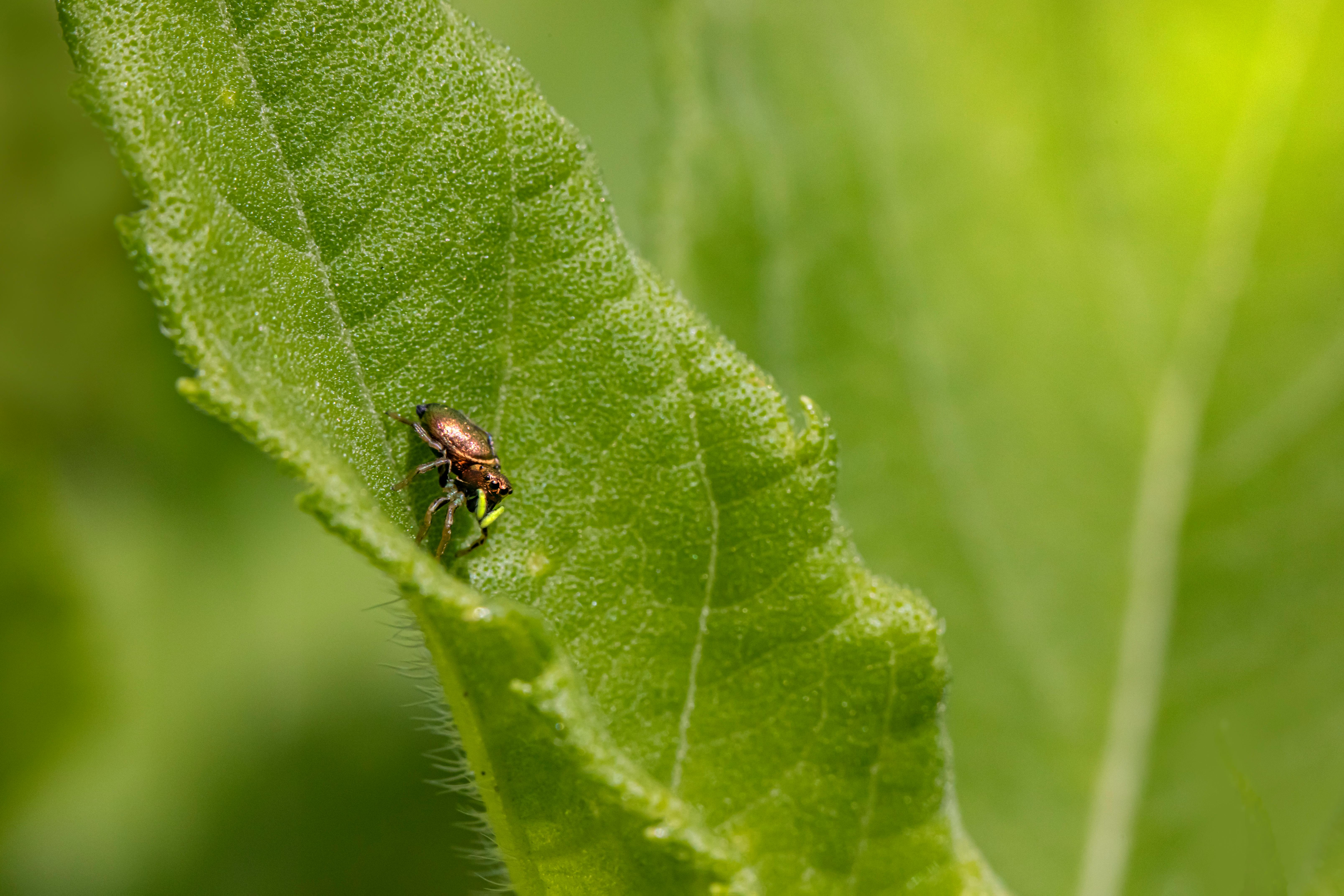
Dogs are often referred to as man’s best friend, but have you ever wondered why they have those cute, wet noses? It turns out, that a dog’s wet nose is more than just a charming feature. It plays a critical role in their sense of smell, which is one of the most advanced in the animal kingdom. In this article, we’ll uncover the incredible biology behind why do dogs have wet noses, exploring the fascinating reasons that make these lovable creatures so special.
The Biology of a Dog’s Nose
Dogs have a highly developed olfactory system, with up to 300 million scent receptors compared to a human’s mere 6 million. The wetness of a dog’s nose is crucial for maximizing their sense of smell. Here’s how it works:
- Moisture Absorption: The moisture on a dog’s nose helps to capture scent particles from the environment. When these particles land on the wet surface, they dissolve, allowing the receptors to detect them more efficiently.
- Temperature Regulation: A wet nose also helps to regulate a dog’s body temperature. When they pant or breathe, the evaporation of moisture from their nose cools their blood vessels, helping to keep them comfortable.
- Enhanced Scent Detection: The wet surface increases the area that scent molecules can adhere to, meaning more smells can be detected at once.
Why Do Dogs Have Wet Noses?
So, why do dogs have wet noses? Here are some reasons:
- Scent Detection: As mentioned, moisture helps to absorb scent particles, enhancing their ability to smell.
- Communication: Dogs often use their noses to gather information about their environment and other animals. A wet nose can be a sign of a healthy, active dog.
- Health Indicator: A wet nose is often associated with a healthy dog. If a dog’s nose is dry, it could indicate dehydration or illness.
Historical Context and Evolution
The wet nose is not just a random trait; it has evolutionary significance. The ancestors of modern dogs were hunters, relying heavily on their sense of smell to track prey and navigate their environment. Over thousands of years, those with the best olfactory capabilities thrived, leading to the dogs we have today. They evolved to have wet noses as a way to enhance their hunting skills and social interactions.
Fascinating Facts About Dog Noses
Here are some interesting points that you might not know about dog noses:
- Distinctive Prints: Just like human fingerprints, each dog’s nose print is unique. This could potentially be used for identification.
- Color Variety: Dog noses can come in various colors, from black to brown, depending on the breed. The color doesn’t affect their sense of smell.
- Nasal Turbinates: Dogs have complex structures in their noses called nasal turbinates, which increase the surface area for scent detection.
Comparison: Dog Noses vs. Human Noses
It might be helpful to compare how dog noses stack up against human noses in terms of olfactory capabilities:
| Feature | Dogs | Humans |
|---|---|---|
| Scent Receptors | Up to 300 million | About 6 million |
| Smell Sensitivity | 10,000 to 100,000 times better | Much less sensitive |
| Nose Surface Area | Larger, more complex | Smaller, simpler structure |
Practical Examples of Dog Scenting Abilities
Dogs are used in various fields because of their extraordinary sense of smell. Some practical examples include:
- Search and Rescue: Trained dogs can locate missing persons by picking up their scent.
- Detection Work: Dogs are utilized in airports and borders to detect illegal substances like drugs or explosives.
- Medical Detection: Some dogs can even detect diseases like cancer or diabetes by sniffing a person’s breath or skin.
The Importance of a Healthy Nose
Keeping your dog’s nose healthy is vital. Here are some tips to ensure your dog maintains that wet, healthy nose:
- Hydration: Always provide fresh, clean water.
- Regular Vet Check-ups: Monitor for any signs of illness or dehydration.
- Nose Care: If you notice your dog’s nose becoming excessively dry or cracked, consult a vet.
The biology behind a dog’s wet nose is not just a quirky trait; it’s a vital component of their ability to navigate and understand the world. It enhances their sense of smell, aids in communication, and even serves as a health indicator. Understanding why dogs have wet noses deepens our appreciation for these incredible animals and their unique adaptations. Embrace this fascinating aspect of your dog, and remember to look after their health, ensuring that those wet noses continue to work their magic!
Wet Noses and Dog Behavior: What Your Pup’s Moist Snout Is Trying to Tell You
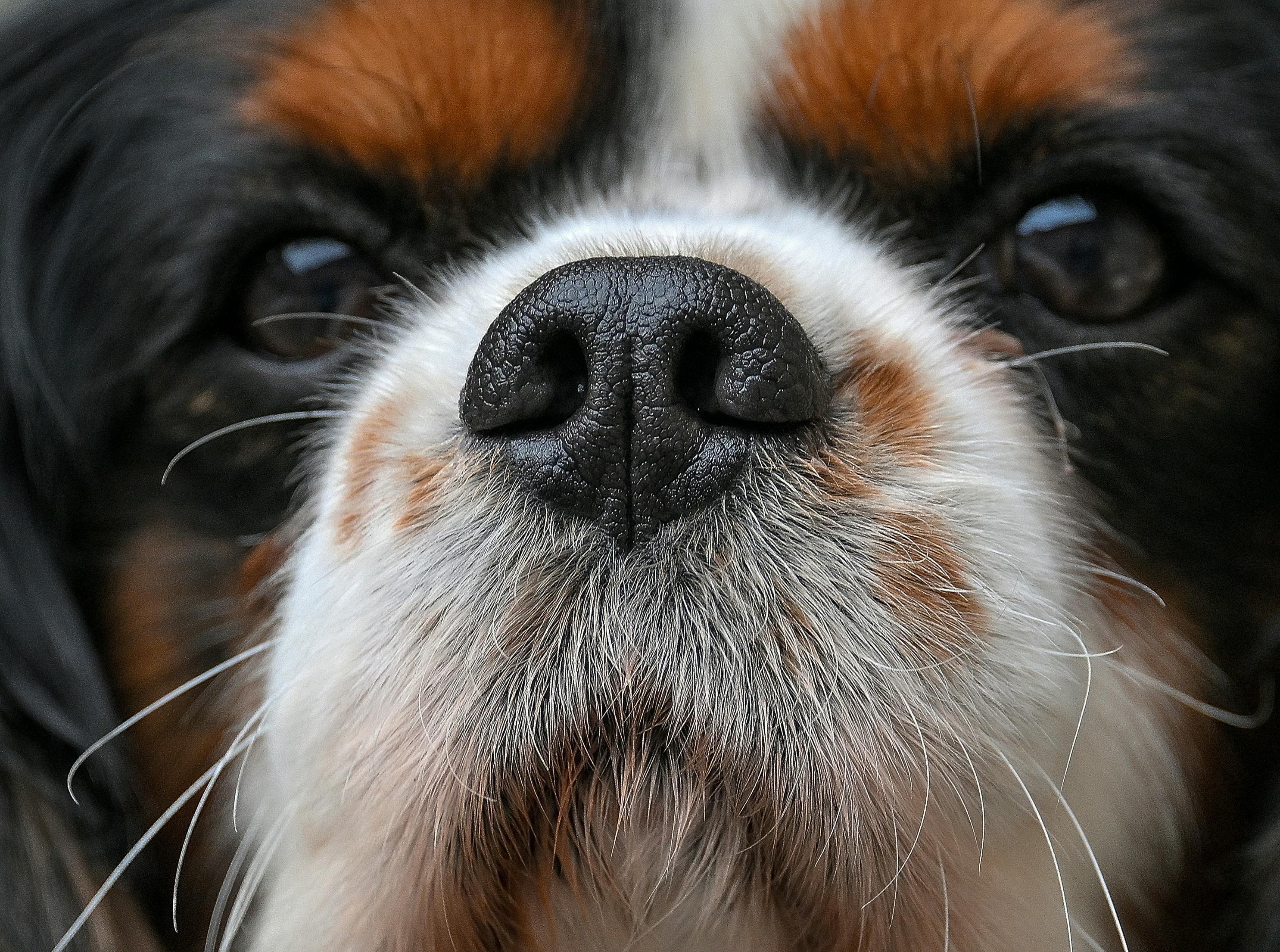
Dogs are often called man’s best friend, and their wet noses are one of the most endearing and peculiar traits they have. You might be wonderin’ why do dogs have wet noses? This simple yet fascinating question opens up a world of understanding about our furry companions and what their moist snouts might be trying to communicate.
The Science Behind Wet Noses
First off, let’s get into the nitty-gritty of it. A dog’s nose is moist for a good reason. The moisture helps them to smell better. Dogs have an amazing sense of smell — way more advanced than humans. Their noses contain special scent receptors, and when the nose is wet, it can absorb scent molecules more easily. This is crucial for dogs, since they rely heavily on their sense of smell to gather information about their environment.
Key Points About Wet Noses:
- Enhanced Smell: Wet noses help dogs capture scent particles.
- Temperature Regulation: They can cool off by panting and through their noses.
- Health Indicator: A change in moisture level can indicate health issues.
Why Are Dog Noses Wet?
But why is a dog’s nose wet in the first place? It comes down to a combination of biology and behavior. Here are some reasons:
- Nasal Glands: Dogs have special glands in their noses that produce mucus. This mucus keeps the nose moist and helps with scent detection.
- Licking: Dogs often lick their noses, which keeps them moist. It’s a natural behavior for them.
- Environmental Factors: Humidity and temperature can also play a role. A dog’s nose might be wetter in humid weather compared to dry conditions.
Wet Noses and Dog Behavior
Now, what does a wet nose mean in terms of behavior? Well, it can tell you a lot about how your pup is feelin’.
- Excitement: If your dog’s nose is especially damp when you come home, it might be a sign of excitement or happiness.
- Curiosity: A wet nose can indicate that your dog is sniffing around and exploring its environment.
- Health Concerns: If a dog’s nose is unusually dry or cracked, it could signal dehydration or illness.
The Fascinating History of Dog Noses
Dogs have been by our sides for thousands of years. Their noses have adapted over time as they became more intertwined with human lives. It’s thought that ancient dogs used their noses to hunt and track, making them valuable companions for early humans.
- Domestication: The domestication of dogs began around 15,000 years ago, and their ability to smell played a key role in this.
- Tracking and Hunting: Many breeds were developed specifically for their keen sense of smell to assist in hunting and tracking.
Fun Facts About Dog Noses
If you think wet noses are interesting, wait till you hear these fun facts!
- Unique Prints: Just like human fingerprints, every dog has a unique nose print.
- Comparison with Humans: Dogs have about 300 million smell receptors, while humans only have about 6 million.
- Temperature Regulation: A wet nose can help dogs regulate their body temperature, acting like a natural air conditioning system.
How to Care for Your Dog’s Nose
Maintaining your pup’s nose is important for its overall health. Here are some tips:
- Hydration: Make sure your dog has access to fresh water at all times.
- Check for Cracks: Regularly inspect your dog’s nose for dryness or cracks, and consult a vet if you see anything unusual.
- Protect from the Sun: In sunny weather, consider using pet-safe sunscreen on your dog’s nose to prevent sunburn.
When to Visit the Vet
Sometimes, a wet nose can be a sign of illness. Here’s when you should think about visiting a vet:
- Persistent Dryness: If your dog’s nose stays dry for an extended period.
- Cracking or Bleeding: Any visible injuries or bleeding should be checked immediately.
- Behavior Changes: If your dog is acting unusually lethargic or shows loss of appetite alongside a dry nose.
Understanding your dog’s wet nose is just one part of the puzzle that helps you bond with your furry friend. Dogs communicate in many ways, and their noses are just one of the fascinating aspects of their behavior. So next time you see that moist snout, remember it’s not just cute; it’s a window into your dog’s world.
The Connection Between a Dog’s Wet Nose and Their Overall Well-Being: Expert Insights
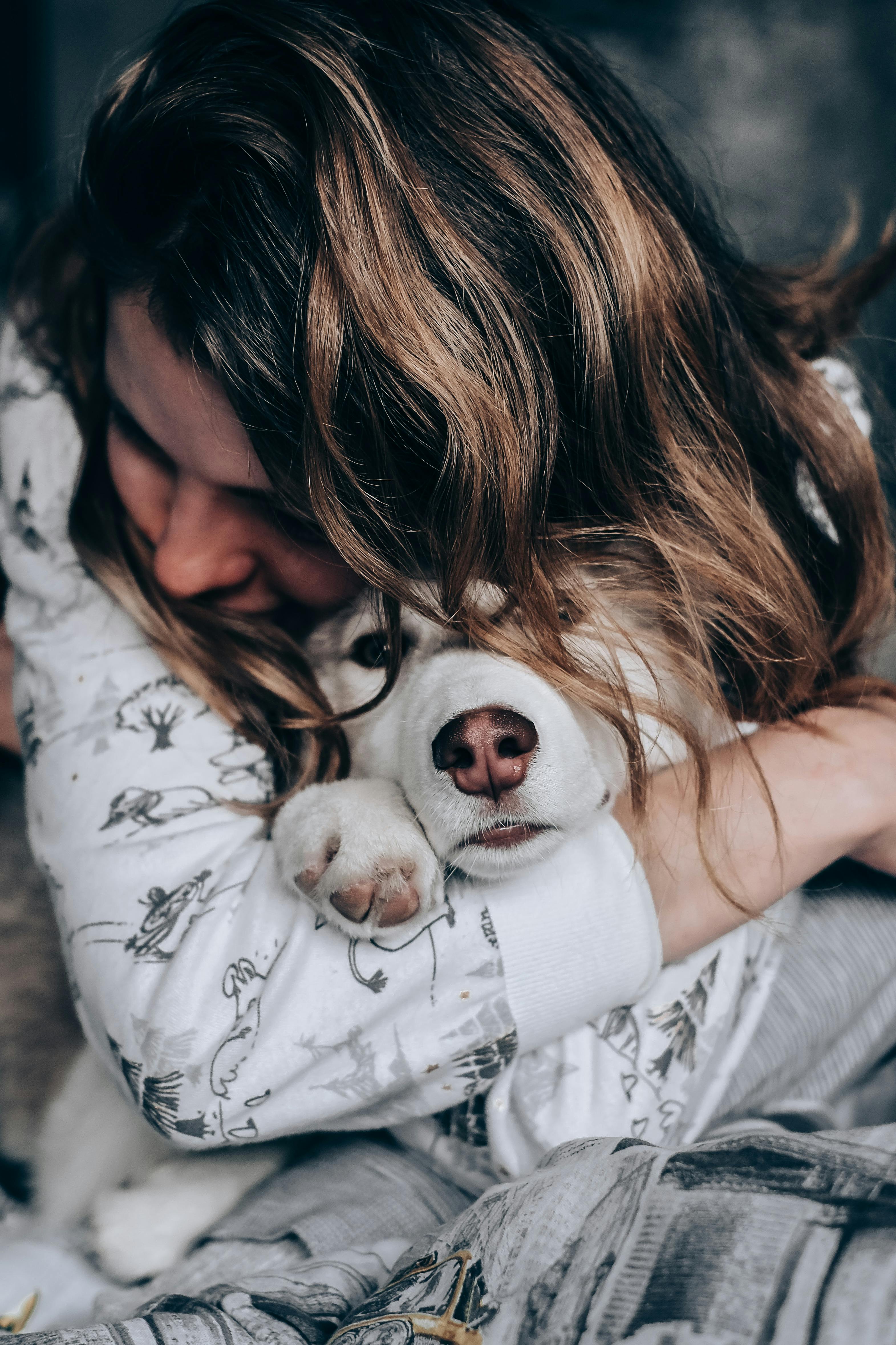
Dogs are often considered man’s best friend, and one of their most distinctive features is their wet nose. Many people wonder, “Why do dogs have wet noses?” The answer goes beyond just a quirky trait; it’s actually tied to their health and well-being. So let’s dive into the fascinating reasons behind this common canine characteristic and how it relates to their overall condition.
The Science Behind a Dog’s Wet Nose
A dog’s nose is usually moist for a reason. This wetness helps them in various ways, primarily in the realm of smell. Dogs have an extraordinary sense of smell, up to 100,000 times more acute than humans, and their noses play a key role in this. When a dog’s nose is wet, it helps to capture scent particles from the air. The moisture on the nose traps these particles, making it easier for the dog to identify different smells.
Here’s a quick breakdown of how a dog’s nose functions:
- Moisture: Keeps scent particles sticking, enhancing their ability to smell.
- Temperature Regulation: A wet nose helps cool down a dog’s body, especially during hot weather.
- Health Indicator: Changes in the moisture level can indicate health issues.
Historical Context of Dog Noses
Historically, dogs have been bred for various purposes, including hunting, herding, and companionship. Their noses have adapted to these roles. For example, bloodhounds were bred specifically for tracking scents, which is why they have such prominent, wet noses—they need that moisture to pick up trails.
In ancient times, dogs were often used for hunting game. Their wet noses not only helped them track scents but also played a role in their survival as they relied on their keen sense of smell to find food. The evolutionary adaptations that led to wet noses have been vital for their roles throughout history.
What Does a Wet Nose Mean for a Dog’s Health?
While a wet nose is generally a sign of a healthy dog, it isn’t always the case. Here’s a list of what different nose conditions might indicate:
- Wet Nose: Generally healthy, actively hydrated.
- Dry Nose: Could indicate dehydration, fever, or illness.
- Cracked or Chapped Nose: Might suggest sunburn, allergies, or a skin condition.
- Warm Nose: Often associated with fever but not a definitive health indicator.
It’s important for dog owners to regularly check their pet’s nose as an indicator of overall health. If a dog’s nose suddenly becomes dry or warm, it could be time to consult a veterinarian.
Factors That Keep a Dog’s Nose Wet
Several factors contribute to keeping a dog’s nose moist. Here are some key elements:
- Saliva Production: Dogs often lick their noses to keep them moist. This is a natural behavior that helps with scent tracking.
- Environment: Humidity levels in the air can affect how wet a dog’s nose remains. Dogs living in drier climates may have drier noses.
- Hydration: Dogs that are well-hydrated typically have wetter noses. Ensuring your dog has plenty of fresh water is crucial.
Fun Facts About Dog Noses
Did you know that a dog’s sense of smell is so powerful that they can detect certain diseases in humans? Here are a few interesting facts about dog noses:
- Unique Prints: Just like human fingerprints, every dog has a unique nose print.
- Nose Temperature: A dog’s nose can change temperature based on their emotions and environmental factors.
- Scent Discrimination: Dogs can distinguish between different scents even in mixed environments, like a busy street or a park.
How to Care for Your Dog’s Nose
Taking care of your dog’s nose is essential for their overall well-being. Here are some tips to keep it healthy:
- Regular Check-ups: Make sure to include nose checks during vet visits.
- Hydration: Always provide fresh water and monitor their intake.
- Avoid Sun Exposure: Use dog-safe sunscreen if your dog spends a lot of time outdoors.
- Watch for Changes: Any sudden changes should be discussed with a vet.
Understanding why dogs have wet noses and the implications it has on their health can enhance the bond between a pet and its owner. It’s a small detail that can tell a big story about your furry friend’s well-being. So the next time you see your dog’s wet nose, remember that it’s not just a cute feature—it’s a vital aspect of their health and happiness.
How Weather Affects Your Dog’s Nose: 7 Tips to Keep It Healthy and Hydrated

Every dog owner knows that their furry friends have wet noses. But have you ever wondered why do dogs have wet noses? It’s a question that many people ask, and the answer is actually quite fascinating. But apart from the “why,” there’s also the “how” when it comes to the weather’s effect on your dog’s nose. Weather can significantly impact their health, particularly their sensitive noses. Thus, knowing how to keep it healthy and hydrated is super important.
Why Do Dogs Have Wet Noses?
Dogs’ noses are wet for several reasons. First off, a wet nose helps them to smell better. Dogs have an incredible sense of smell, and moisture on their noses helps to enhance their olfactory abilities. When a dog’s nose is wet, it can trap scent particles in the air, making it easier for them to identify smells.
Here are some interesting facts about why dogs have wet noses:
- Thermoregulation: A wet nose helps keep dogs cool. They don’t sweat like humans do; instead, they rely on their noses to help regulate their body temperature.
- Health Indicator: A dog’s nose can be an indicator of their health. A consistently dry or cracked nose might be a sign of dehydration or illness.
- Social Signals: Dogs use their noses to communicate. A wet nose can indicate that a dog is friendly and approachable.
How Weather Affects Your Dog’s Nose
The weather can play a big role in the health of your dog’s nose. Cold weather can lead to dry, chapped noses, while hot weather can cause dehydration. Here are some ways different weather conditions influence your dog’s nose:
Cold Weather:
- Dry air can lead to cracks and irritation.
- Snow and ice can cause frostbite on exposed areas.
Hot Weather:
- High temperatures can lead to dehydration, making the nose dry.
- Sunburn can happen if a dog is left outside too long without shade.
7 Tips to Keep Your Dog’s Nose Healthy and Hydrated
Here’s some practical advice to ensure your dog’s nose stays healthy throughout all seasons.
Ensure Hydration: Always provide fresh water for your dog. Dehydration can lead to dry noses.
Use Nose Balm: Consider applying a dog-safe nose balm during winter months. It helps to prevent chapping and cracking.
Limit Sun Exposure: In summer, try to keep your dog in shaded areas. Dogs can get sunburned too!
Humidify Indoor Air: In winter, use a humidifier to keep indoor air moist. This helps prevent dry noses.
Monitor Outdoor Time: Don’t let your dog stay outside for too long in extreme weather conditions.
Regular Vet Check-ups: Keep up with regular vet visits. They can help spot any potential nose problems.
Nutritional Diet: A balanced diet rich in omega fatty acids can help keep your dog’s skin and nose in good condition.
Comparison of Nose Conditions
To help you understand better, here’s a simple comparison of common nose conditions:
| Condition | Symptoms | Possible Causes |
|---|---|---|
| Dry Nose | Cracks, irritation | Dehydration, cold weather |
| Runny Nose | Excess moisture, discharge | Allergies, infections |
| Cracked Nose | Fissures, bleeding | Lack of moisture, sunburn |
| Swollen Nose | Redness, discomfort | Allergic reactions, insect bites |
It’s important to keep an eye on your dog’s nose and consult a vet if you notice any significant changes.
Weather can affect your dog in many ways, and their noses are no exception. Ensuring your dog maintains a healthy and hydrated nose is crucial for their overall well-being. By following these tips, you can help keep your dog’s nose in top shape, regardless of the weather. Remember, a wet nose isn’t just cute; it’s a sign of a healthy, happy dog! So, the next time you see those adorable wet snouts, you’ll understand a bit more about the science (and care) behind it.
Do All Dogs Have Wet Noses? Exploring Breeds and Their Unique Traits
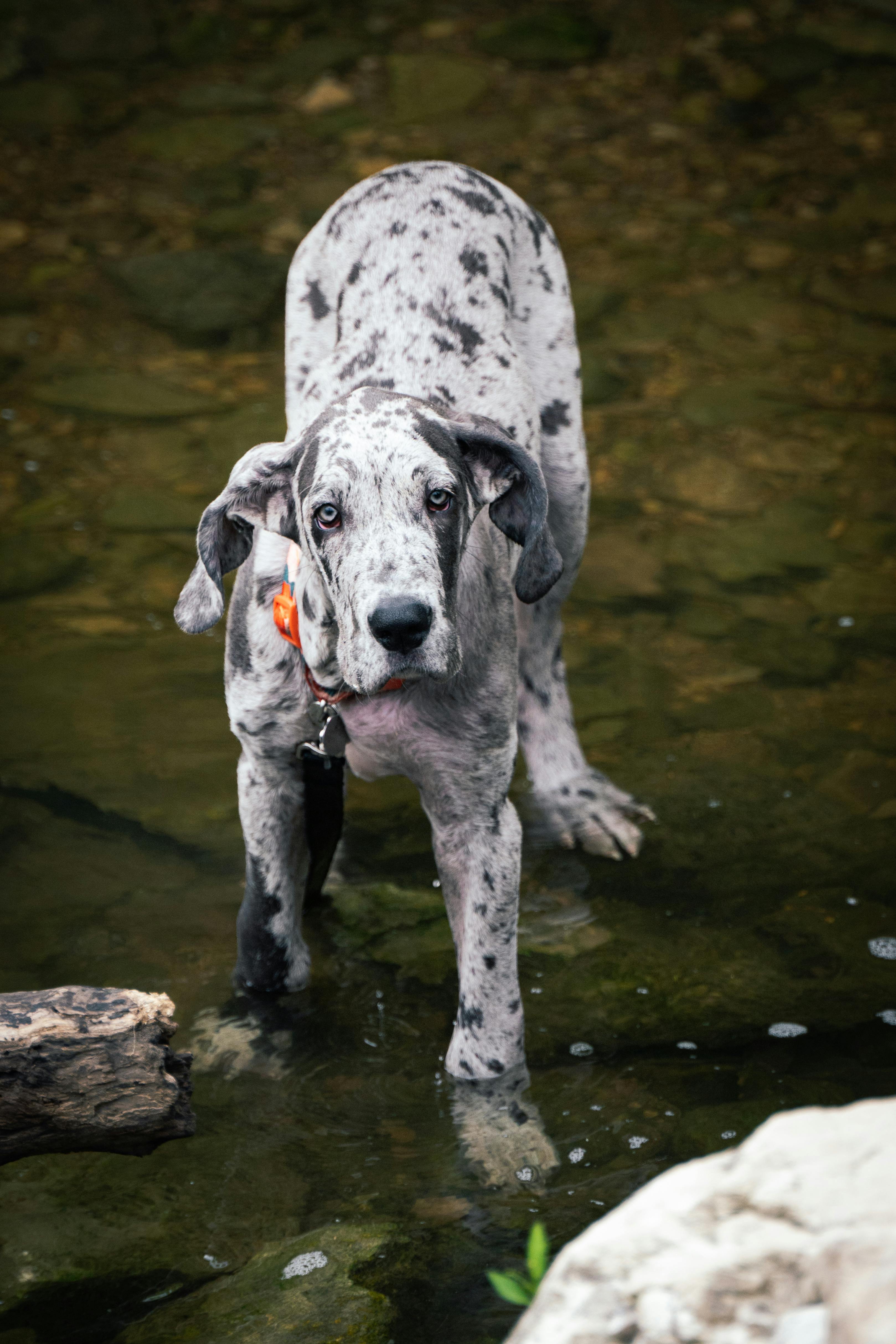
When you think about dogs, many people probably picture those cute furry faces with wet noses. But, do all dogs have wet noses? And, why do dogs have wet noses in the first place? Let’s dive into the world of canines and explore the intriguing science behind this common trait, alongside some breed specifics and their unique characteristics.
The Science Behind Wet Noses
Dogs are unique creatures, and their wet noses serve several important functions. A dog’s nose is not just for sniffing; it plays a critical role in their health and well-being. Here’s some reasons why their noses are usually wet:
Sense of Smell: A wet nose helps enhance a dog’s sense of smell. The moisture on the nose traps scent particles, making it easier for dogs to identify various smells. This is why dogs are often used in search and rescue operations or sniffing out drugs.
Temperature Regulation: Dogs can’t sweat like humans do. Instead, they rely on their noses to help cool down. The moisture evaporating from their noses aids in regulating their body temperature.
Health Indicator: A dog’s nose condition can indicate its health. A normal, wet nose is usually a sign of a healthy dog, while a dry, cracked nose might suggest dehydration or illness.
Do All Breeds Have Wet Noses?
While most dogs do have wet noses, there are exceptions based on breed characteristics. Some breeds are known for their particularly distinctive nose traits. Here’s a list of a few breeds and their unique nose features:
Bloodhound: Known for their incredible sense of smell, they have large, droopy, wet noses that help them track scents over long distances.
Bulldog: Bulldogs often have flatter noses which can result in less moisture. They might appear drier compared to other breeds.
Chihuahua: These tiny dogs usually have wet noses, but it can dry out quickly due to their small size and fast metabolism.
Poodle: Poodles are known for their curly fur, but they also have wet noses that help them retain moisture.
Siberian Husky: Huskies have wet noses, but their thick fur can sometimes make it appear less wet.
Factors Influencing Nose Moisture
Several factors can influence how wet a dog’s nose is. These include:
Weather Conditions: Hot, dry weather can lead to drier noses. Alternatively, humid conditions can keep noses moist.
Health Status: As mentioned before, a dry nose can indicate health issues. If a dog’s nose is consistently dry, it may be important to consult a veterinarian.
Age: Older dogs might not have the same moisture levels in their noses as younger dogs.
The Fascinating Reasons Dogs Have Wet Noses
Aside from the scientific benefits, there’s some fascinating reasons why dogs have wet noses that pet owners might find interesting:
Communication: Dogs often use their noses to communicate with each other. A wet nose can signify friendliness and openness.
Grooming: Wet noses can also be a sign of a dog’s grooming habits. Dogs often lick their noses to keep them clean and moist.
Curiosity: Dogs explore their environments through smell and taste. A wet nose can help them gather more information about their surroundings.
Social Behavior: Dogs often greet each other with nose touches, which can be a way of establishing social bonds.
Survival Instincts: In the wild, the ability to smell food or danger is vital. A wet nose enhances this survival mechanism.
What About Dry Noses?
It’s important for dog owners to understand that a dry nose isn’t always alarming. Here’s a quick look at when a dry nose might be normal and when it could indicate a problem:
Normal Situations:
- After sleeping
- During high temperatures
- When a dog is feeling relaxed
When to Worry:
- Persistent dryness
- Cracks or sores on the nose
- Accompanied by lethargy or loss of appetite
Understanding your dog’s nose and its condition can provide valuable insight into their overall health.
In summary, while most dogs do have wet noses, it’s a fascinating characteristic that varies among breeds. The science behind why dogs have wet noses is intertwined with their health, communication, and behavior. So next time you see a pup with a wet nose, you can appreciate not just its cuteness, but also the many reasons behind this adorable trait. Knowing this can even enhance your relationship with your furry friend.
Is Your Dog’s Wet Nose a Sign of Illness? 10 Warning Signs to Watch For

Every dog owner has probably noticed their pet’s wet nose and wondered if it means something. It’s a common belief that a dog’s wet nose is a sign of good health, but is that always true? Many pet owners might ask, “Is your dog’s wet nose a sign of illness? 10 warning signs to watch for.” Knowing these signs can help you keep your furry friend safe and healthy. Let’s dive into the fascinating world of dog noses and discover why they are so wet in the first place!
Why Do Dogs Have Wet Noses?
First, let’s explore the reasons behind the wetness of dog noses. A dog’s nose is not just a cute feature; it serves important functions. Here’s what you should know:
Temperature Regulation: Dogs don’t sweat like humans. Instead, they use their noses to help cool down. The moisture on a dog’s nose can help with this process.
Enhanced Smell: A wet nose can capture scent particles more effectively. This is because moisture helps dissolve these particles, making it easier for dogs to smell.
Health Indicator: A wet nose is often associated with a healthy dog. However, it should not be the only indicator you rely on.
10 Warning Signs to Watch For
While a wet nose can indicate health, there can be times it signals something is wrong. Here’s a list of 10 warning signs to keep an eye on:
Dry Nose: A persistently dry nose might indicate dehydration or a fever.
Cracked or Bleeding Nose: This might be a sign of allergies, infections, or even autoimmune diseases.
Change in Color: If the nose changes color (from black to pink or vice versa), it could indicate health issues.
Excessive Nasal Discharge: Green or yellow discharge can be a sign of infection or illness.
Changes in Behavior: If your dog is lethargic, refuses food, or shows unusual aggression, it could be a sign of illness.
Frequent Sneezing or Coughing: These can indicate respiratory issues, possibly linked to a wet nose.
Foul Smell: A strong odor coming from the nose may suggest a sinus infection or other health problems.
Loss of Appetite: If your dog isn’t eating and has a wet nose, it’s time to visit the vet.
Shivering or Trembling: This could signal pain or discomfort.
Increased Thirst: If your dog is drinking more water than usual, it could indicate health issues.
Keep an Eye on Your Dog’s Nose
Being vigilant about your dog’s health is crucial. Changes in their nose can be subtle but important. Here’s a simple table to help you remember the signs:
| Warning Sign | Possible Issue |
|---|---|
| Dry Nose | Dehydration, fever |
| Cracked/Bleeding Nose | Allergies, infections |
| Color Change | Health issues |
| Excessive Nasal Discharge | Infection |
| Behavioral Changes | Illness |
| Frequent Sneezing/Coughing | Respiratory issues |
| Foul Smell | Sinus infection |
| Loss of Appetite | Possible illness |
| Increased Thirst | Health problems |
| Shivering/Trembling | Pain or discomfort |
Historical Context of Dog Noses
Interestingly, the anatomy of a dog’s nose has been shaped by evolution. Dogs were domesticated thousands of years ago, and their noses have become tools for survival. In fact, certain breeds have developed unique nose shapes that enhance their ability to detect scents. For example, bloodhounds have an incredible sense of smell, which has even been used in search and rescue operations.
Practical Examples of Nose Care
Taking care of your dog’s nose is as important as caring for their overall health. Here’s a quick list of tips:
Hydration: Make sure your dog is drinking enough water.
Regular Vet Visits: Routine check-ups can help catch any potential issues early.
Allergy Awareness: Keep an eye on what might trigger allergies in your dog’s environment.
Nasal Moisturizers: In dry weather, consider using a dog-safe nose balm to prevent cracking.
Understanding your dog’s wet nose and the significance behind it can help you identify health issues early. Remember, while a wet nose often means a happy dog, it’s essential to observe any changes and act accordingly. Keep your dog healthy and happy!
The Evolutionary Purpose of Dogs’ Wet Noses: Nature’s Design for Survival
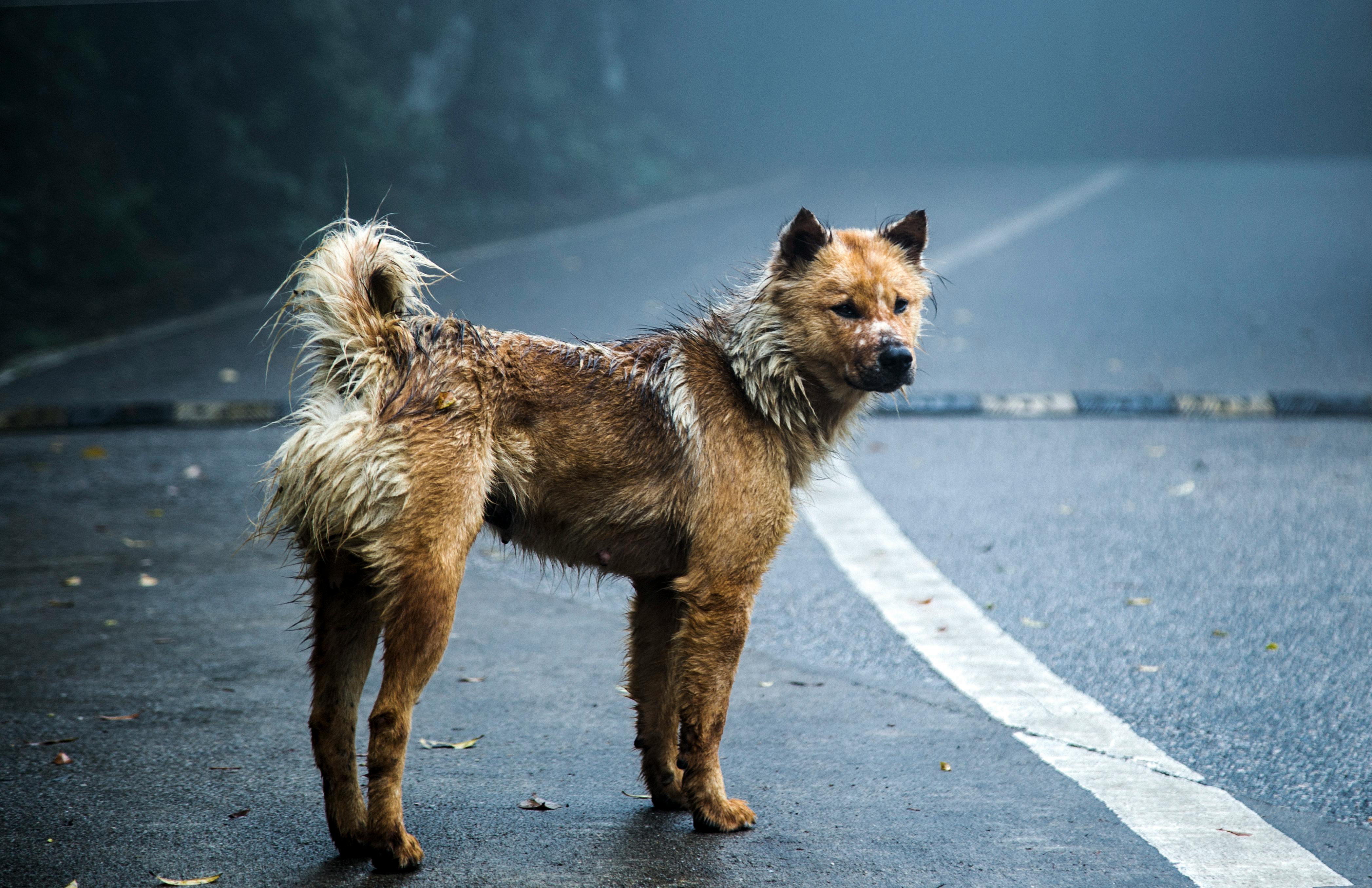
Dogs are often considered man’s best friend, but have you ever wondered why they have those intriguing wet noses? This question might seem simple, but its answer dives into the evolutionary history and biological function of our furry companions. So, let’s discover the fascinating reasons behind why do dogs have wet noses.
The Science Behind Wet Noses
Firstly, a dog’s nose is not just for show. It’s a highly sensitive organ that plays a vital role in their survival. The moisture on a dog’s nose serves several purposes:
Enhanced Sense of Smell: Dogs have an extraordinary sense of smell, estimated to be anywhere from 10,000 to 100,000 times more acute than humans. The wetness of their noses helps to trap scent particles from the air, making it easier for them to detect and identify various smells.
Temperature Regulation: Dogs don’t sweat like humans do. Instead, they rely on their noses to help cool down their bodies. When a dog pants, the moisture on their nose evaporates, which assist in regulating their body temperature.
Communication: Dogs also use their noses to communicate with other dogs. A wet nose can indicate excitement, friendliness, or even submission. Dogs often greet each other by sniffing noses, which allows them to gather important information about each other.
Historical Context of Dogs’ Noses
The evolution of the dog’s wet nose is tied closely to their ancestors. Early canines, like wolves, relied heavily on their sense of smell to hunt and survive. As dogs were domesticated, they retained this adaptation.
Here are some historical points to consider:
Domestication: Dogs were domesticated between 20,000 to 40,000 years ago. Their noses have evolved to assist them in tracking scents, which was crucial for hunting and scavenging.
Breeding Practices: Over time, humans have selectively bred dogs for specific traits, including their sense of smell. This has resulted in breeds like Bloodhounds and German Shepherds that have exceptionally wet noses and heightened olfactory abilities.
Comparisons with Other Animals
When you look at other animals, you might see similar features, but dogs’ noses are unique. Here’s a quick comparison:
| Animal | Nose Type | Purpose |
|---|---|---|
| Dogs | Wet and cold | Enhanced smell, cooling, communication |
| Cats | Dry and warm | Basic scent detection, limited cooling |
| Elephants | Long and wet | Smelling from great distances, cooling |
| Snakes | No nose, uses tongue | Scenting through Jacobson’s organ |
Practical Examples of Nose Functions
Dogs use their noses in many fascinating ways that can benefit humans too. Here are some practical examples:
Search and Rescue: Many dogs are trained to use their noses in search and rescue missions. Their ability to detect scents from long distances makes them invaluable in locating missing persons.
Medical Detection: Some dogs are trained to detect diseases like cancer or diabetes through scent. Their wet noses help them to pick up on chemical changes in a person’s body.
Tracking: Hunting dogs utilize their noses to track animals, often leading hunters directly to their prey.
Why Do Some Dogs Have Drier Noses?
You might notice some dogs have drier noses than others. This can be due to several factors:
Health Issues: A dry nose might indicate dehydration or illness. If a dog’s nose is consistently dry, it’s advisable to consult a veterinarian.
Environmental Conditions: Dogs living in dry climates may experience drier noses than those in humid areas.
Breed Differences: Some breeds naturally have drier noses due to their genetic makeup.
All in all, a dog’s wet nose is much more than a cute feature. It serves essential functions that have been honed over thousands of years of evolution. Understanding these reasons can deepen your appreciation for these wonderful companions.
Next time you pet your dog, take a moment to think about the incredible design of their wet nose and all the fascinating ways it helps them survive and thrive in our world.
How to Care for Your Dog’s Nose: Essential Tips for Keeping It Moist and Healthy

Dogs are truly wonderful companions, and their noses are one of the most interesting things about them. You might’ve noticed your dog’s nose is often wet, and it makes you wonder, why do dogs have wet noses? Well, it turns out there are several reasons for this. In addition to understanding the reasons behind those wet noses, it’s important to care for them too. Here we will explore how to care for your dog’s nose, while also diving into the science behind why they’re often moist.
Why Do Dogs Have Wet Noses?
So, let’s start with the burning question: why do dogs have wet noses? There are a few fascinating reasons for this.
- Sense of Smell: A wet nose helps dogs to smell better. The moisture on their noses captures scent particles from the air, making it easier for them to detect different odors.
- Temperature Regulation: Dogs don’t sweat like humans do. Instead, they cool down by panting and through the moisture on their noses. A wet nose helps regulate their body temperature.
- Health Indicator: A dog’s nose can indicate their health. A healthy dog typically has a cool, moist nose, while a dry nose could signal dehydration or illness. However, not all dry noses mean something is wrong!
Essential Tips for Keeping Your Dog’s Nose Moist and Healthy
Now, let’s discuss how you can care for your dog’s nose and keep it moist and healthy. It’s really not that hard, but it requires some attention. Here are practical tips to consider:
- Hydration is Key: Always ensure your dog has access to fresh water. Dehydration can lead to a dry nose, so keeping your dog hydrated is a must.
- Humid Environment: If you live in a dry area, consider using a humidifier. This can help maintain moisture in the air, which is beneficial for your dog’s nose.
- Regular Cleaning: Sometimes, dirt and debris can get stuck in your dog’s nose. Gently wipe their nose with a soft, damp cloth to keep it clean. Avoid using harsh chemicals.
- Nose Balms: There are pet-safe nose balms available that can help moisturize your dog’s nose. If it’s particularly dry, applying a thin layer can help.
Recognizing Problems with Your Dog’s Nose
It’s also crucial to recognize when your dog’s nose may indicate a problem. Here are some signs to look out for:
- Cracking or Bleeding: If your dog’s nose is cracking or bleeding, it could be a sign of a more serious health issue.
- Excessive Dryness: A consistently dry nose can indicate dehydration or illness, so keep an eye on your dog.
- Discoloration: Changes in color, like turning red or dark, may also suggest an underlying problem.
Common Myths About Dog Noses
There are plenty of myths surrounding dog noses that you might have heard. Let’s debunk a few:
- All Wet Noses are Healthy: While a wet nose is often a sign of health, it’s not the only indicator. Dogs can be sick even with a wet nose.
- Dogs Sweat Through Their Noses: They don’t sweat from their noses. Dogs primarily sweat through their paw pads, and their noses are primarily for smell and temperature regulation.
Fun Facts About Dog Noses
Did you know that dog noses are as unique as human fingerprints? Here are some fun facts to ponder:
- Unique Patterns: Each dog’s nose has a unique pattern of ridges and creases, much like human fingerprints.
- Scent Receptors: A dog’s nose has up to 300 million scent receptors, compared to a human’s 5 million, making their sense of smell incredibly powerful.
- Nose Temperature: A dog’s nose can change temperature based on their emotional state. For example, when excited, the nose can feel warmer.
Caring for your dog’s nose is essential for their overall health and well-being. By understanding why their noses are wet and how to keep them healthy, you can ensure your furry friend stays happy and comfortable. So, the next time you see that adorable, moist nose, you’ll know not just why it’s wet, but also how to take care of it. Remember, a little attention goes a long way in keeping your dog’s nose—and overall health—in tip-top shape!
Conclusion
In conclusion, the wet noses of dogs serve several essential functions that contribute to their overall health and well-being. From enhancing their sense of smell to regulating body temperature, a dog’s moist nose plays a critical role in their sensory perception and communication. The moisture also helps to trap scent particles, making it easier for them to identify and interact with their environment. Additionally, a wet nose can indicate hydration levels, providing insight into a dog’s health status. If you’re a dog owner, paying attention to your pet’s nose can be a simple yet effective way to monitor their well-being. So, the next time you admire that adorable wet nose, remember the science behind it and cherish the unique bond you share with your furry friend. Consider sharing this information with fellow dog lovers to spread awareness about the fascinating biology of our canine companions!

